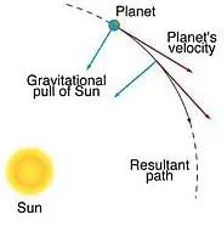

6th June 2024 (12 Topics)
Context
In the realm of astrophysics, Scientists are puzzled by how galaxies move. They spin faster than expected based on normal gravity rules or they does not align with predictions based on Newton's laws of gravity when applied to visible matter. Galaxies rotate at velocities far exceeding what Newtonian physics anticipates, suggesting the presence of additional, unseen mass. To explain this, they came up with dark matter, an invisible substance. Another idea is MOND, a tweak to gravity's rules.
Dark Matter vs. MOND
1. Dark Matter Theory
- It says invisible stuff called dark matter holds galaxies together. Even though it's successful, we haven't seen dark matter directly.
- Dark matter serves as a theoretical solution to the discrepancy in galactic rotation rates. It proposes the existence of invisible mass that provides the necessary gravitational pull to prevent galaxies from flying apart.
- Despite its success in explaining various astrophysical phenomena, dark matter remains elusive, with no direct observational evidence.
2. MOND Theory
- Modified Newtonian Dynamics (MOND), proposed by Mordehai Milgrom, is an alternative theory to explain galactic dynamics. It suggests a modification of gravity's behavior at low accelerations, particularly at the edges of galaxies.
- It suggests gravity works differently in weak places like galaxy edges.
- Testing MOND: The Cassini mission, orbiting Saturn, provided an opportunity to test MOND's predictions through precise measurements of Saturn's orbit. However, analysis of Cassini's data did not reveal the expected deviations, reinforcing the efficacy of Newtonian physics in explaining Saturn's orbit.
Recent Studies and Challenges to MOND
- Galactic Mass Calculations: A study explored the possibility of adjusting galactic mass calculations to accommodate MOND's predictions. Despite these adjustments, MOND still failed to align with Cassini's data.
- Binary Star Orbits: Another study scrutinized the orbits of wide binary stars, finding no support for MOND's prediction of faster orbital speeds. The results strongly contradict MOND's expectations.
- Outer Solar System and Galaxy Clusters: MOND also faces challenges in explaining the behavior of small bodies in the outer Solar System and the motions within galaxy clusters. Newtonian gravity, coupled with the presence of dark matter, offers a more consistent explanation for these phenomena.
Conclusion
While the concept of dark matter presents its own set of challenges, MOND, in its current form, fails to provide a viable alternative. Despite its initial promise, recent studies and observations highlight significant discrepancies between MOND's predictions and empirical data. Thus, the enigma of dark matter persists, suggesting that our understanding of the universe's gravitational dynamics remains incomplete.
Fact Box:Newton's Law of Universal Gravitation:
Dark Matter:
|
PYQQ1: Consider the following phenomena: (2018)
Solution: (d) Q2. The known forces of nature can be divided into four classes, viz. gravity, electromagnetism, weak nuclear force and strong nuclear force. With reference to them, which one of the following statements is not correct? (2013)
|



